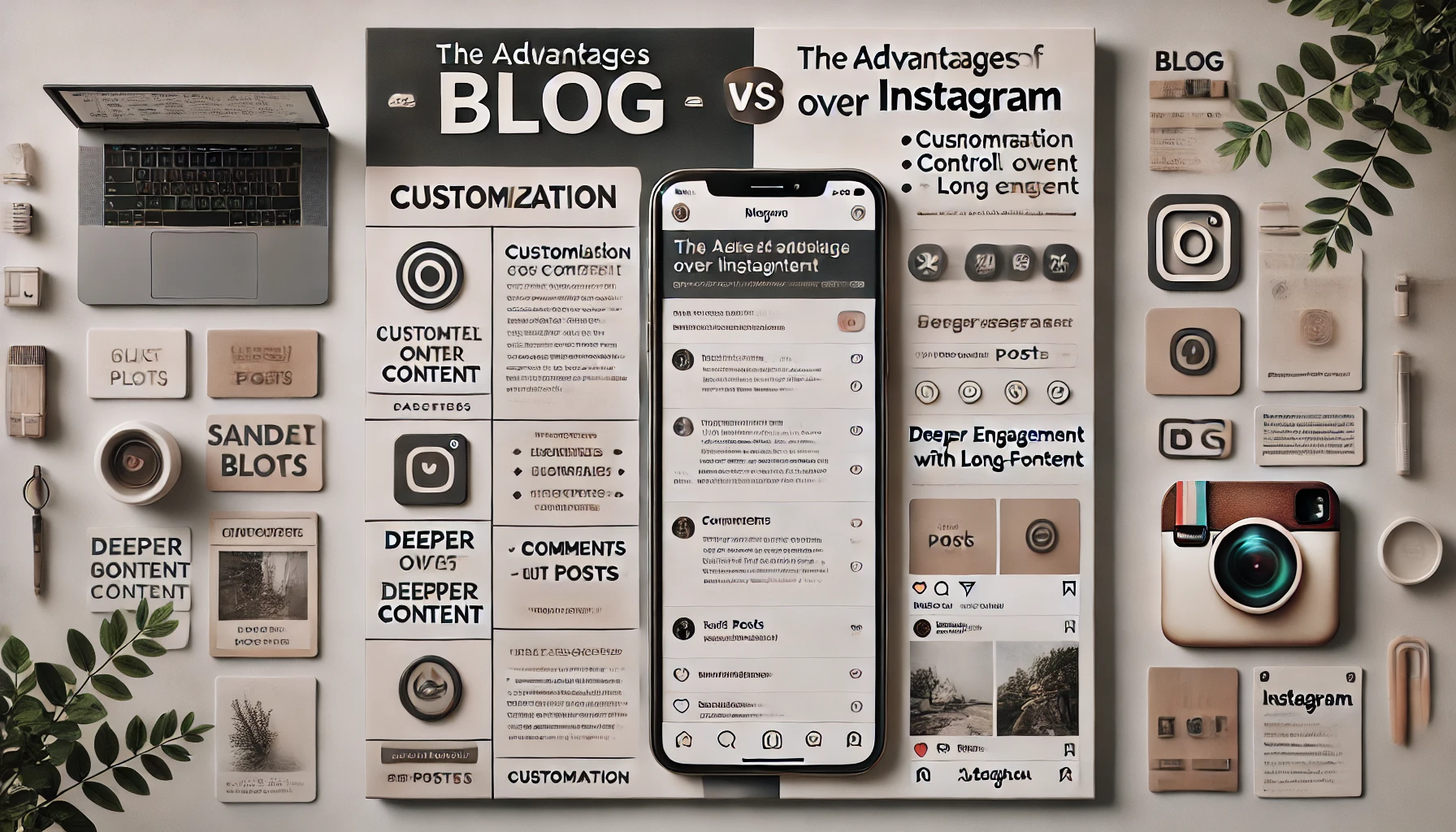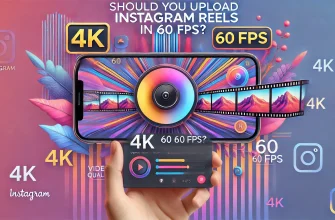A standalone blog is a separate “autonomous” blog located at a separate address on the Internet. An example of a standalone is this very blog where you are reading this post. Let’s compare the advantages of maintaining such a resource compared to a blog on Instagram.
I realize that I am comparing blue with hot and big with bright, but I am doing it consciously. Without a comparison to social networks, it’s impossible to highlight the advantages of a standalone. And, of course, I’m not suggesting that you shouldn’t use social media (I use it myself); each platform has its benefits, and, overall, they can complement each other well.
We’ll discuss the drawbacks of a standalone blog some other time. But for me, here are the advantages of a standalone compared to Instagram:
- 100% freedom in design
- 100% freedom in functionality
- Multiple monetization options available
- You control your platform’s policies
- Attract SEO traffic
- You can add outbound links anywhere
- Include related posts
- Interlinking
- Embed! Insert content from social media and other services
- No Character Limit!
- Text Search
- Text-Only Posts Allowed
- Readers Don’t Need to Log In to Read Your Posts
- Complete Control Over Your Data
- Ease of Building a Subscription Base
- Comprehensive Analytics and Statistics on Your Terms
- SEO Promotion and Long-Term Impact
- Total Freedom in Content Format and Themes
- Choice of Monetization through Partnerships and Sponsorships
- Independence from Social Media Algorithms
- Establishing Dialogue with Your Audience through Comments
100% freedom in design
Create any design you like! There are hundreds of thousands, if not millions, of visual layout options for your blog.
100% freedom in functionality
You can add various plugins and widgets to your blog, transforming it into a social network, photo hosting site, e-commerce platform, media outlet, private forum, or anything else… all in one place.
Multiple monetization options available
With traffic and site authority, you can monetize your standalone blog as you see fit:
- Contextual advertising
- Banner ads
- Teaser ads
- Paid link placements on your site
- Sponsored articles and reviews
- Push notifications
and much more.
You control your platform’s policies
Write and publish what you want, how you want. Just don’t break the law. Thanks in advance for that 🙂
Attract SEO traffic
This means traffic from search engines. It’s easier for people to find your blog through search results than to locate an Instagram post (let alone TikTok).
You can add outbound links anywhere
Instagram doesn’t allow this—there’s only the “link in bio” and swipe-up links in Stories. That’s it.
Include related posts
This is so cool! Take a look at how they appear on my blog (under this post, for example). This increases user engagement, improves your traffic quality, and boosts stats. Related Posts are awesome!
Interlinking
You can link one of your posts to another. Instead of saying “in April last year, I posted about the White Dunes in Vietnam; you can scroll down 25 posts to find it,” you simply link to the post. Done!
Embed! Insert content from social media and other services
You can embed videos from YouTube, Vimeo, TikTok, as well as content from Instagram, Facebook, and countless other photo and video hosts. For example, like this:
No Character Limit!
Write endlessly long and beautiful posts—no one will judge 🙂 Not that they’ll necessarily read it all, but…
These 10 advantages are already enough for me to keep posting here on my own standalone blog. But there are two more.
The next advantage is a real ace up the sleeve!
⇓⇓⇓⇓
Text Search
Yes, you can easily search and find your posts with a simple search bar! Instagram can’t do that. Imagine that you once spent New Year in Tallinn, made a few Instagram posts. Years later, you might want to look back, re-read, or even edit that content. But how would you search for it? You’d need to scroll back through years of posts. With a standalone blog on WordPress (or any CMS), just type “Tallinn” in the search bar, and voilà! Isn’t it wonderful?
Text-Only Posts Allowed
You’re not required to use an image or video to publish a post. Let’s admit, not every social media platform can offer that freedom.
Readers Don’t Need to Log In to Read Your Posts
On Instagram, it’s challenging to read others’ posts without logging in. An autonomous blog doesn’t have that problem—it’s open to all (if that’s what you wish).
Complete Control Over Your Data
On your own platform, you are the master of your data. No social network can block your content or restrict its access, and you are not dependent on changing algorithms. Your data is under your control, and you decide how to manage it.
Ease of Building a Subscription Base
In a standalone blog, you can easily set up email subscriptions, retaining your audience’s contact information and building closer relationships. On social networks, the subscriber base is inaccessible, and connections depend on external conditions, whereas in a blog, you can communicate directly with subscribers and control the frequency and content of emails.
Comprehensive Analytics and Statistics on Your Terms
A blog provides detailed analytics that shows user behavior: which pages are the most visited, how much time readers spend on the site, and which posts hold attention. Analytics on social media is limited, while in your own blog, you can set up tracking for the data that you specifically need.
SEO Promotion and Long-Term Impact
Each post in the blog works for your visibility in search engines, especially if the content is well thought out and optimized for audience queries. Social media posts get lost over time in the feed, while a blog can provide a steady stream of traffic through search engine rankings. Moreover, proper SEO promotion improves the chances of the blog attracting an audience for many years.
Total Freedom in Content Format and Themes
In a blog, you can publish any formats: articles, podcasts, videos, and even create knowledge bases. You can structure content by categories, tags, and sections, creating a real library of knowledge for your audience. In social media, the opportunities for such structured content archives are more limited.
Choice of Monetization through Partnerships and Sponsorships
Besides placing ads and publishing paid articles, you can offer sponsorship, conduct your own courses or training programs, and sell your products and services. In social networks, such options are limited by the platform itself, while on your own site, your opportunities are endless.
Independence from Social Media Algorithms
On social media, your posts are seen only by those followers whom the network shows them to. In a standalone blog, content is open to everyone, and your articles remain fully accessible. You are not limited by formats and text length, and you can write posts in any style and volume.
Establishing Dialogue with Your Audience through Comments
In a blog, you can manage comments, moderation, and communication with your audience on your terms. This allows for a more constructive and thoughtful dialogue with readers, as comments are preserved under the articles, helping to accumulate valuable discussions and ideas.
This was a list of the advantages of a standalone blog compared to Instagram.
















